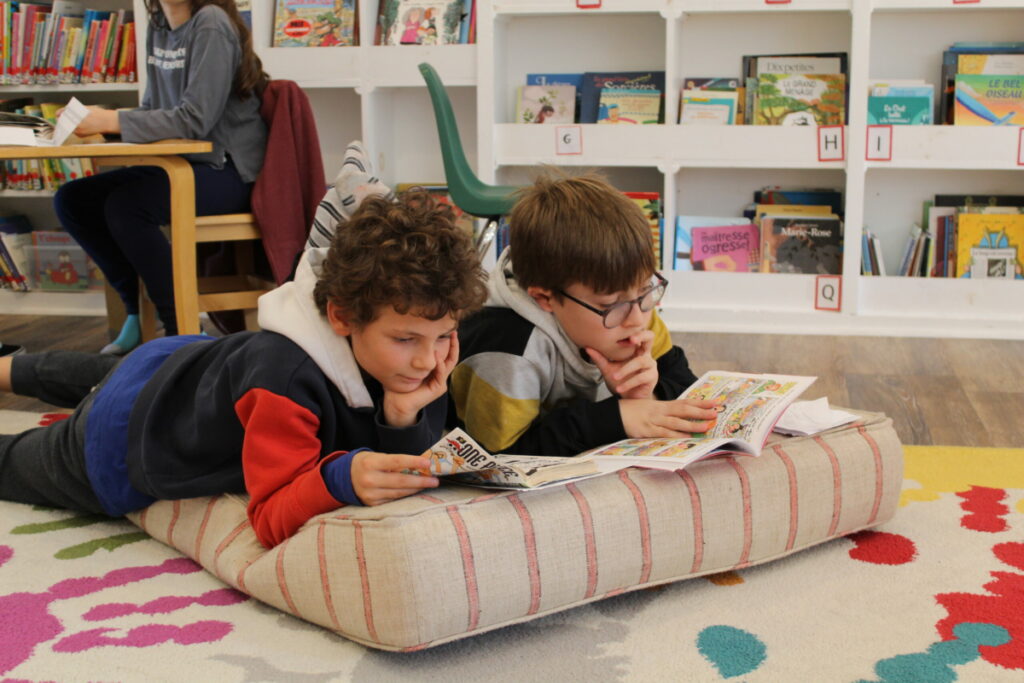At the French American Academy, our commitment to academic excellence is grounded in the strength of the French national curriculum—a robust framework updated last October to reflect the latest best practices in education. Combined with the US Common Core standards, this foundation supports a rigorous, inclusive, and forward-looking bilingual learning experience. The recent enhancements to the French program—particularly in Cycles 1 and 2—provide more explicit, detailed, and practical guidance for educators, leading to richer and more structured learning opportunities for your child.
One of the greatest strengths of the French education system is the stability and coherence of its national curriculum, which spans from preschool (PK2) through high school. The French national program is updated thoughtfully and deliberately—prioritizing quality over trend. The most recent curriculum revisions, released in October 2024, were the first major updates since 2018, reaffirming France’s commitment to long-term educational vision and consistency. These new updates currently apply to Cycles 1 and 2, with revisions to Cycle 3 expected in the near future. This structured approach ensures that students benefit from a clear, rigorous, and cumulative progression of knowledge over time.
Table of Key Learning Enhancements and Curriculum Focus Areas
- Age-Based Developmental Stages and Learning Objectives
- Clearer Presentation of Objectives and Outcomes
- Emphasis on Oral Language and Its Role in Learning
- Building Vocabulary, Syntax, and Phonemic Awareness
- Learning in Context: A Core Principle
- Mathematics in Daily Life: Building Patterns and Problem-Solving Skills
- Strengthening Reading and Writing in Cycle 2
- From Concrete to Abstract: The Role of Singapore Math
- Fluency, Automaticity, and Homework
- Early Introduction to Fractions
- Professional Development and Expert Guidance
- Conclusion and What’s Next: Cycle 3 Updates Coming Soon
Age-Based Developmental Stages and Learning Objectives
Among the most notable changes in the updated French curriculum is the clearer progression of learning objectives by age. The program is now organized into distinct developmental stages:
- before age four,
- from age four
- from age five.
This structured progression allows educators to better align teaching practices with the cognitive and emotional development of each age group, ensuring that learning builds gradually and appropriately throughout the early years.
Clearer Presentation of Objectives and Outcomes
The updated curriculum content is now presented in a clear two-column format. On the left side, learning objectives are listed, while the right side offers precise and detailed examples of successful outcomes that help teachers build observation frameworks. These concrete examples clarify expectations for student progress, while also providing helpful points of attention to guide educators in supporting each child’s development effectively.
In mathematics, the right column will emphasize the procedures that students must acquire to achieve these objectives.
Example of language acquisition objectives in cycle 1

Example of mathematical objectives in cycle 2 –

Emphasis on Oral Language and Its Role in Learning
In the updated curriculum, oral language plays an even more prominent role, reflecting its foundational importance in helping children express themselves, comprehend others, and develop their thinking. This emphasis is especially relevant in a bilingual environment like ours, where strong oral skills in both languages support deeper learning and confidence. The program reinforces the principle that one cannot write what one cannot say—making oral language a prerequisite for written expression. This clear, structured progression of skills ensures that students build a solid linguistic foundation before moving on to reading and writing.
Building Vocabulary, Syntax, and Phonemic Awareness
The updated program places a strong emphasis on the explicit acquisition and mastery of vocabulary, recognizing it as a cornerstone of language development. The texts highlight the need for a gradual and thorough development of syntax, ensuring that children build complex sentence structures over time. Additionally, the program calls for early awareness of phonology and phonemic consciousness—key components in preparing children for reading. These enhancements are designed to initiate each child’s journey as a reader, equipping them with the linguistic tools needed to understand, communicate, and thrive in both spoken and written language.
Learning in Context: A Core Principle
One of the key principles highlighted in the updated program is the importance of learning in context—a notion we particularly value at the French American Academy. Learning new vocabulary or concepts in meaningful situations not only supports deeper understanding but also strengthens long-term retention. This contextual approach fosters connections across subjects and languages, allowing our students to apply their knowledge with relevance and confidence in real-life scenarios.
Mathematics in Daily Life: Building Patterns and Problem-Solving Skills
Just as language learning thrives when rooted in real-life context, mathematics, too, is best developed through meaningful, daily experiences. In the updated curriculum daily engagement with mathematical thinking is essential, around 5 themes:
- Understanding numbers
- Using numbers to solve problems
- Exploring solids and flat shapes
- Exploring magnitudes: length, mass
- Getting familiar with organized patterns.
A new feature in the updated math program in cycle 1 is the focus on the 5th theme — familiarizing children with organized patterns, such as algorithms, though not limited to them. This approach encourages children to explore various types of patterns in different contexts. For example, they may encounter patterns in everyday objects, like alternating two red beads and three blue beads on a necklace, or auditory patterns like alternating high and low sounds in a piece of music. Patterns can even be explored through movement, such as taking two steps forward and then three steps to the left.
This shift is more detailed than in previous programs, highlighting the importance of pattern recognition in early mathematics education. By focusing on these structured patterns, students are not only building foundational mathematical skills but also developing critical thinking and problem-solving abilities. This emphasis on patterns will require special attention as it plays a key role in laying the groundwork for more advanced mathematical concepts.
Strengthening Reading and Writing in Cycle 2
The recent updates to the Cycle 2 curriculum bring greater clarity and coherence to the teaching of reading and writing, reinforcing a simultaneous and structured approach. Emphasis is placed on developing a true love of reading, alongside explicit instruction in decoding and writing, from the very start of formal education.
From Concrete to Abstract: The Role of Singapore Math
The new curriculum places strong emphasis on a progressive learning approach that moves from concrete to visual to abstract understanding—a sequence that aligns perfectly with our use of the Singapore Math method at the French American Academy. This structured progression helps students build deep mathematical comprehension, starting with hands-on experiences before moving to pictorial representations and finally to abstract reasoning. In addition, the areas of calcul mental (mental math) and résolution de problèmes (problem-solving) are more thoroughly developed and detailed than in previous Cycle 2 programs, providing students with clearer strategies and more guided practice.
Fluency, Automaticity, and Homework
The concept of fluency now appears in the mathematics curriculum, highlighting the importance of accuracy in basic skills. This addition in the new program fully supports our recent revision of homework requirements as we strongly believe that building automaticity is a key component of a strong foundation.

Early Introduction to Fractions
Last but not least, fractions are now introduced as early as Cycle 2. In CE1 / 2nd grade, students begin by understanding fractions as parts of a whole—for example, recognizing that 3/8 represents three equal parts when a whole is divided into eight. By CE2 / 3rd grade, they move on to representing fractions on a number line by dividing a unit of length into equal parts, helping them visualize and place fractions accurately. This early introduction follows insights from international assessments, which show that countries with strong student performance in mathematics often begin teaching fractions at this stage.
Professional Development and Expert Guidance
To ensure that these updates are seamlessly integrated into our classroom practices, our teachers undergo targeted professional development and collaborate regularly to align their teaching with both French and American educational standards.
As part of this process, we had the privilege of welcoming Olivier Quenis, Inspecteur d’Académie. Based in Ottawa, Olivier serves as an advisor and auditor for all schools within the North America network. His role involves conducting audits and evaluations to ensure that French-accredited schools across the continent meet the high standards set by the French Ministry of Education.
During his visit, Mr. Quenis engaged in meaningful discussions with our faculty and staff, observed classes to confirm alignment with French educational standards, and provided valuable insights on the recent updates to the French curriculum for Cycle 1 (PK3 to Kindergarten) and Cycle 2 (1st to 3rd grade).
Conclusion and What’s Next: Cycle 3 Updates Coming Soon
The recent updates to the French national curriculum at the French American Academy mark a significant step forward in providing a more explicit, structured, and practical learning framework for our students. With the enhancements to Cycles 1 and 2, children now benefit from clearer developmental progressions, a stronger focus on oral language and vocabulary, and a more hands-on, contextual approach to both language and mathematics. These changes ensure that every student builds a solid foundation for future academic success, supported by best practices from both French and American educational standards.
Looking ahead, it is important to note that changes for Cycle 3 are on the horizon. The upcoming revisions will continue this trajectory of thoughtful, research-based improvement, further reinforcing the stability and coherence that define the French curriculum. As we anticipate these updates, our commitment remains unwavering: to provide your child with a rigorous, inclusive, and forward-thinking bilingual education that evolves with the latest educational insights and prepares them for lifelong learning. Stay tuned-Cycle 3 changes are coming soon, promising even more opportunities for growth and excellence in our classrooms.








